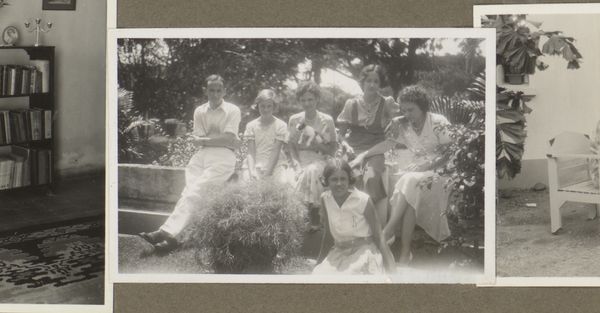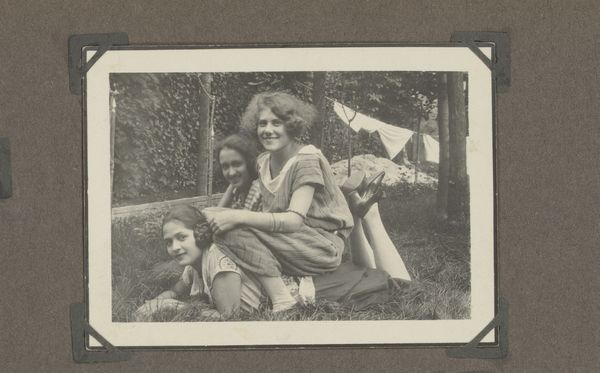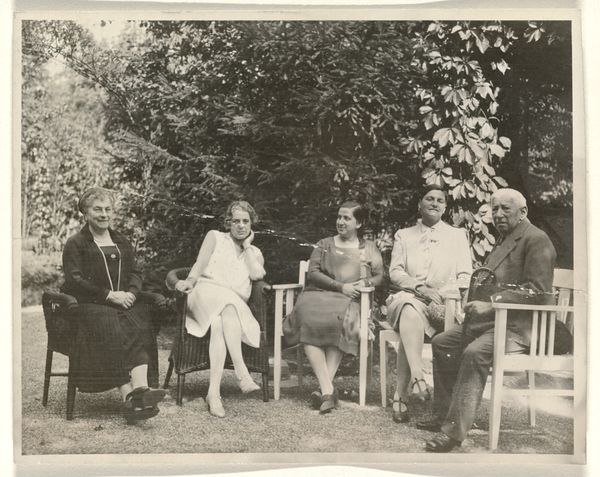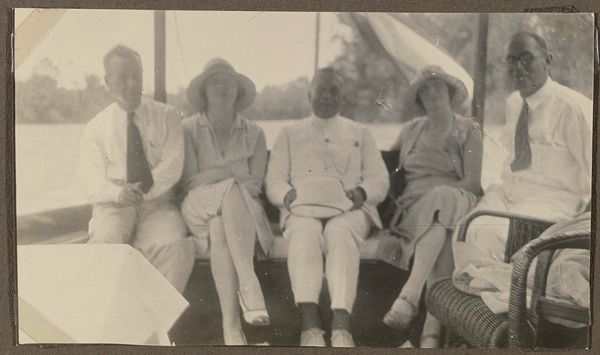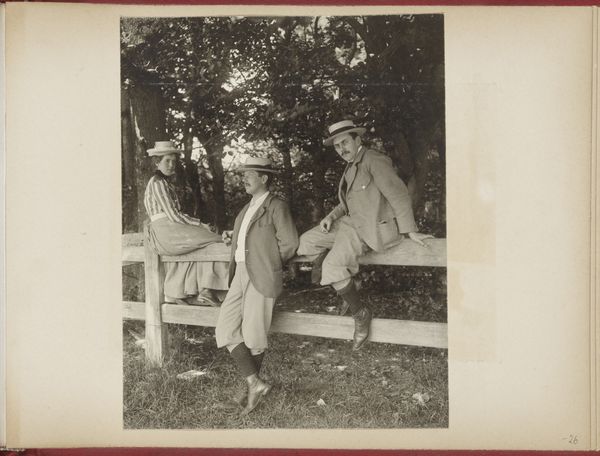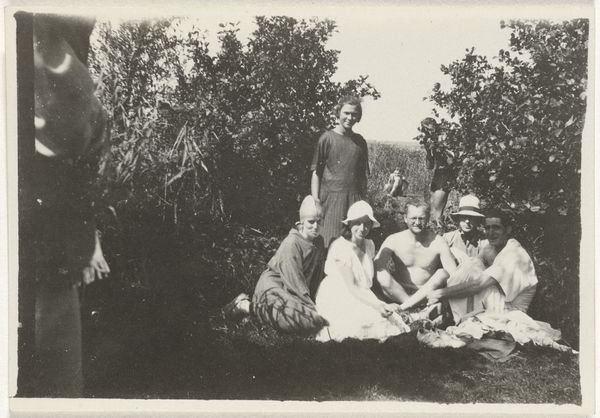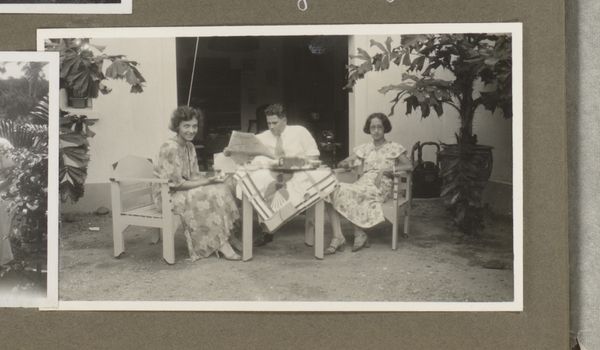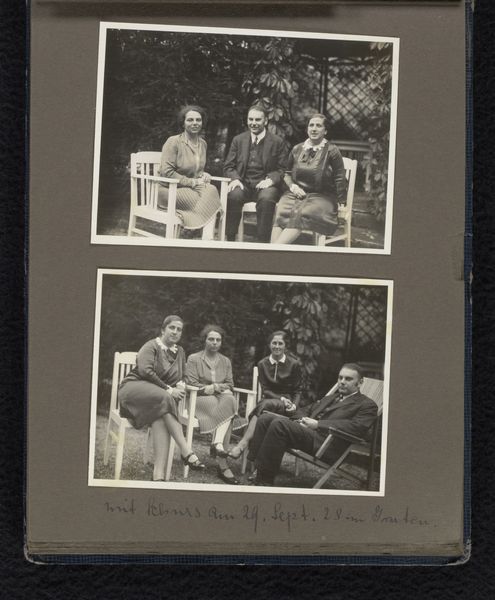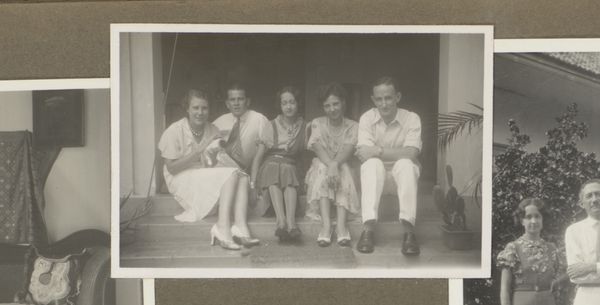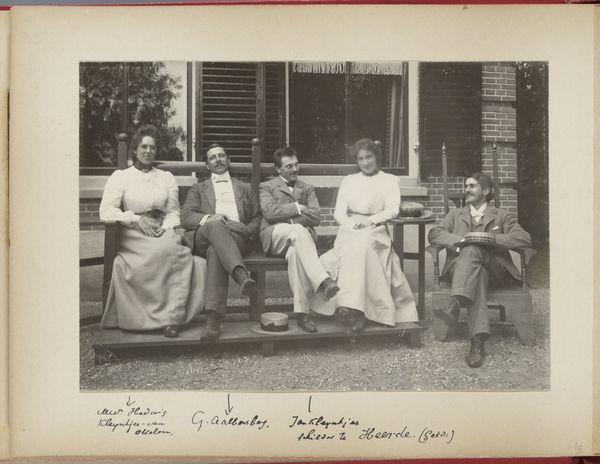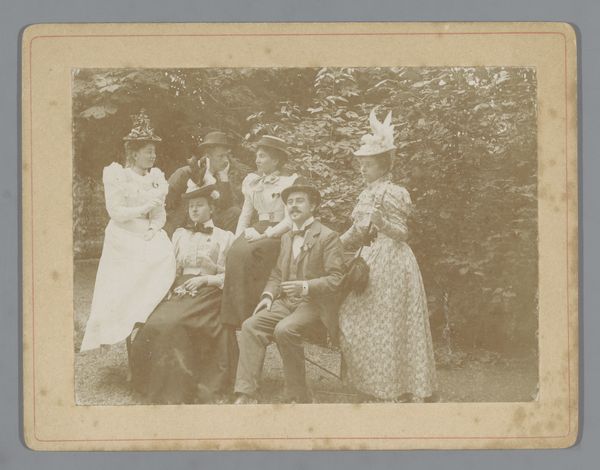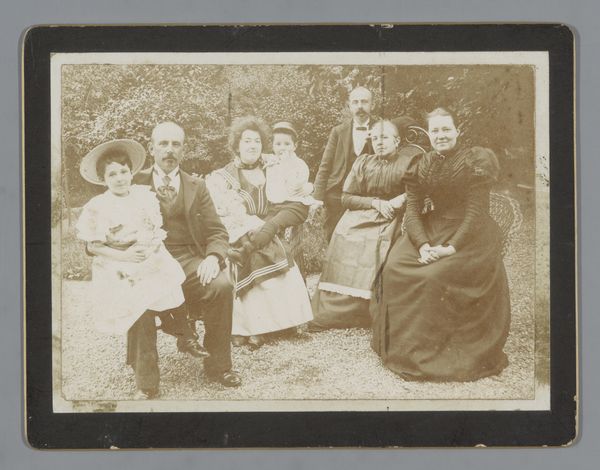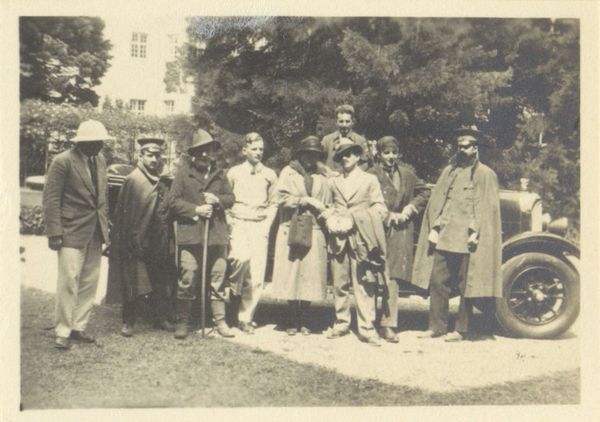
Groepsportret van Wilhelmina en Dootje van Zijll de Jong met anderen in een tuin 1930 - 1935
0:00
0:00
Dimensions: height 114 mm, width 83 mm
Copyright: Rijks Museum: Open Domain
Editor: So, here we have an untitled photograph taken sometime between 1930 and 1935, "Groepsportret van Wilhelmina en Dootje van Zijll de Jong met anderen in een tuin," a group portrait by an anonymous photographer. The overall impression I get is one of restrained joy, a very composed moment in time. What do you see in this photograph? Curator: I see a frozen moment, yes, but one pregnant with the untold stories. Consider the clothing, the hemlines, the fabrics—these aren't simply garments, but markers of a specific social stratum and era, the interwar period in Europe. How does the formality of their poses contrast with the informality of the garden setting? Editor: That's interesting. I hadn’t really considered the tension between the posed nature and the garden. It does seem staged but relaxed, doesn’t it? What symbols would have resonated with audiences back then? Curator: Think of the garden itself. Throughout art history, gardens have symbolized paradise, refuge, cultivated nature… In this context, perhaps it’s a symbol of stability, or an aspiration for a better future, amidst economic hardship. Does their attire, particularly the dresses, communicate something specific, a visual shorthand? Editor: The dresses do look of a certain period. Is that communicating modernity, perhaps a move away from more restrictive clothing from before? Curator: Exactly! It also perhaps subtly communicates the wearer's adherence to contemporary cultural values, but also to notions of leisure. Even the photograph itself--the act of documentation—becomes a symbol. What memory is being captured, and for whom? Is there a particular element that intrigues you most? Editor: I guess it’s the anonymity of it all; the photograph with no known photographer nor real reason. That mystery itself, in a way, becomes symbolic of a larger story of history itself and memory. Curator: Precisely. These everyday images become archives, vessels carrying layered meanings about those who inhabited them. Each detail whispers to us if we take time to listen.
Comments
No comments
Be the first to comment and join the conversation on the ultimate creative platform.
